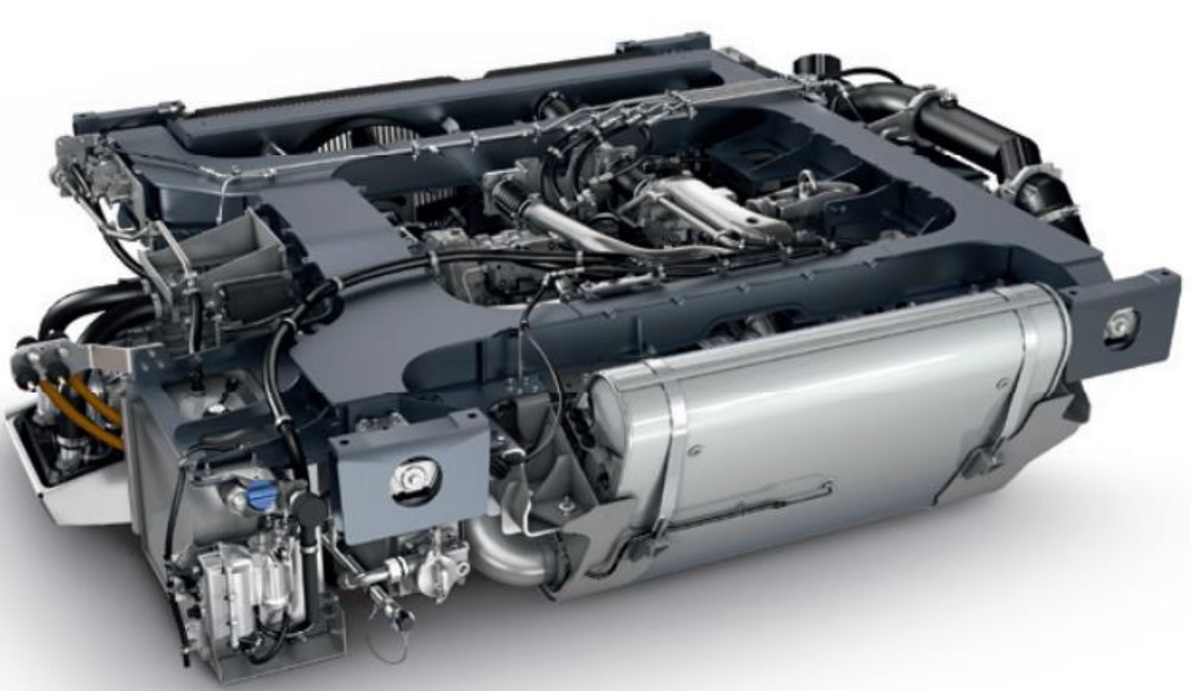Current issue
Online first
Archive
About the Journal
Aims and scope
Publisher and Editorial
Advertising policy
For Authors
Paper review procedures
Procedures protecting authentic authorship of papers
Paper preparation manual
Plagiarism check
Publication ethics
Reviewers
APC
Editorial and Scientific Board
Contact
Reviewers
Comparison and analysis of modern combustion powertrain systems of rail vehicles
1
Faculty of Civil and Transport Engineering, Poznan University of Technology, Poland
2
-, Institute of Railway Transportation, Poland
Submission date: 2023-05-25
Final revision date: 2023-08-17
Acceptance date: 2023-08-18
Online publication date: 2023-10-28
Publication date: 2024-01-02
Corresponding author
Combustion Engines 2024,196(1), 46-53
KEYWORDS
TOPICS
ABSTRACT
The article presents the currently used technologies and solutions for rail vehicle drive systems that can be used in the future. The most popular systems used in locomotives and multiple units are described. In addition, modern solutions such as bi-mode locomotives and hybrid vehicles are shown. The article also discusses the possibility of using ultracapacitors, batteries or fuel cells in order to increase the efficiency of the powertrain of a rail vehicle. The selection of the appropriate solution depends on the intended use of the vehicle and the assumed traction characteristics and requires a thorough analysis including, among others, modeling of the drive system and its management.
REFERENCES (26)
2.
Böhm M, Fernández Del Rey A, Pagenkopf J, Varela M, Herwartz-Polster S, Nieto Calderon B. Review and comparison of worldwide hydrogen activities in the rail sector with special focus on on-board storage and refueling technologies. Int J Hydrogen Energy. 2022;47(89):38003-38017. https://doi.org/10.1016/j.ijhy....
4.
Daszkiewicz P, Kurc B, Pigłowska M, Andrzejewski M. Fuel cells based on natural polysaccharides for rail vehicle application. Energies. 2021;14:1144. https://doi.org/10.3390/en1404....
5.
DieselNet. Engine & emission technology online – since 1997. https://dieselnet.com (accessed on 05.2023).
6.
Far M. Study of new solutions for drive and control systems for light rail vehicles (in Polish). Poznań 2021.
7.
Guo L, Hu P, Wei H. Development of supercapacitor hybrid electric vehicle. Journal of Energy Storage. 2023;65:107269. https://doi.org/10.1016/j.est.....
9.
Kalociński T. Modern trends in development of alternative powertrain systems for non-road machinery. Combustion Engines. 2022;188(1):42-54. https://doi.org/10.19206/CE-14....
10.
Kamińska M, Kołodziejek D, Szymlet N, Fuć P, Grzeszczyk R. Measurement of rail vehicles exhaust emissions. Combustion Engines. 2022;189(2):10-17. https://doi.org/10.19206/CE-14....
11.
Kozak M, Merkisz J, Bielaczyc P, Szczotka A. The influence of oxygenated diesel fuels on a diesel vehicle PM/NOx emission trade-off. SAE Technical Paper 2009-01-2696. 2009. https://doi.org/10.4271/2009-0....
12.
Kozak M, Merkisz J. Oxygenated diesel fuels and their effect on PM emissions. Applied Sciences. 2022;12:7709. https://doi.org/10.3390/app121....
13.
Kurc B, Pigłowska M, Rymaniak Ł, Fuć P. Modern nanocomposites and hybrids as electrode materials used in energy carriers. Nanomaterials. 2021;11:538. https://doi.org/10.3390/nano11....
14.
Lamba P, Singh P, Singh P, Singh P, Bharti, Kumar A et al. Recent advancements in supercapacitors based on different electrode materials: classifications, synthesis methods and comparative performance. Journal of Energy Storage. 2022;48:103871. https://doi.org/10.1016/j.est.....
15.
Lisowski M, Gołębiewski W, Prajwowski K, Danilecki K, Radwan M. Modeling the fuel consumption by a HEV vehicle – a case study. Combustion Engines. 2023;193(2):71-83. https://doi.org/10.19206/CE-15....
17.
Merkisz J, Pielecha I, Andrzejewski M, Daszkiewicz P, Stawecki W. Legal conditions in the aspect of pollutant emissions from exhaust systems of rail vehicles engines. Journal of KONES. 2018;25(1):257-264. https://doi.org/10.5604/01.300....
18.
Pielecha I, Dimitrov R, Mihaylov V. Energy flow analysis based on a simulated drive of a hybrid locomotive powered by fuel cells. Rail Vehicles/Pojazdy Szynowe. 2022;(1-2):68-76. https://doi.org/10.53502/RAIL-....
19.
Pietrzkiewicz H, Domagała R, Michalak P. Application of locomotive dual mode type 111DE for intermodal transport. Research and Technical Papers of Polish Association for Transportation Engineers in Cracow. Series: Proceedings. 2021;2(123):305-314.
21.
Shirres D, Baxter J. The future for hydrogen trains in the UK. 2019. https://www.imeche.org/policy-... (accessed on 06.2023).
22.
Siwiec J. Application of hydrogen fuel cells in railway transport. Railway Reports. 2021;190:53-57. https://doi.org/10.36137/1906P.
25.
Xia S, Wu X, Zhang Z, Cui Y, Liu W. Practical challenges and future perspectives of all-solid-state lithium-metal batteries. Chem. 2019;5(4):753-785. https://doi.org/10.1016/j.chem....
CITATIONS (5):
1.
Model of energy consumption by brake discs of rail vehicles
Wojciech Sawczuk, Mateusz Jüngst, Daniel Kaczmarek
Rail Vehicles/Pojazdy Szynowe
Wojciech Sawczuk, Mateusz Jüngst, Daniel Kaczmarek
Rail Vehicles/Pojazdy Szynowe
2.
Analysis of the use of photovoltaic panels on the roof and walls of passenger carriages to reduce electricity consumption
Piotr Stegenta, Paweł Daszkiewicz, Mariusz Far
Rail Vehicles/Pojazdy Szynowe
Piotr Stegenta, Paweł Daszkiewicz, Mariusz Far
Rail Vehicles/Pojazdy Szynowe
3.
Reduction of Toxic Compounds Emissions From Diesel Engines Powered with Recycled Fuels
Marcin Szczepanek, Oleh Klyus, Jerzy Cisek
2024 3rd International Conference on Problems of Logistics, Management and Operation in the East-West Transport Corridor (PLMO)
Marcin Szczepanek, Oleh Klyus, Jerzy Cisek
2024 3rd International Conference on Problems of Logistics, Management and Operation in the East-West Transport Corridor (PLMO)
4.
Analysis of a ride comfort for passengers in a multiple unit powered by an ecological hydrogen powertrain
Ján Dižo, Miroslav Blatnický, Alyona Lovska, Vadym Ishchuk, Vasyl Ravlyuk
IOP Conference Series: Earth and Environmental Science
Ján Dižo, Miroslav Blatnický, Alyona Lovska, Vadym Ishchuk, Vasyl Ravlyuk
IOP Conference Series: Earth and Environmental Science
5.
Evaluation of the reliability of a heavy diesel locomotive
Maciej Grzywna
Combustion Engines
Maciej Grzywna
Combustion Engines
Share
RELATED ARTICLE
We process personal data collected when visiting the website. The function of obtaining information about users and their behavior is carried out by voluntarily entered information in forms and saving cookies in end devices. Data, including cookies, are used to provide services, improve the user experience and to analyze the traffic in accordance with the Privacy policy. Data are also collected and processed by Google Analytics tool (more).
You can change cookies settings in your browser. Restricted use of cookies in the browser configuration may affect some functionalities of the website.
You can change cookies settings in your browser. Restricted use of cookies in the browser configuration may affect some functionalities of the website.



